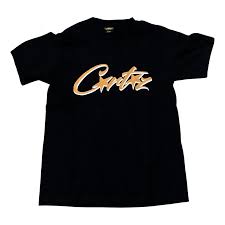Monofilament wigs are a top choice for those seeking a natural and realistic appearance. Known for their high-quality construction and versatility, these wigs are designed to mimic the look of real hair growing from the scalp, making them a favorite among wig wearers. Whether you are experiencing hair loss, undergoing medical treatments, or simply want to change your hairstyle, monofilament wigs offer an ideal solution. In this article, we will explore what monofilament wigs are, their benefits, types, and tips for choosing and caring for them.
What Are Monofilament Wigs?
A monofilament wig features a special cap construction made from a sheer, breathable mesh fabric. The monofilament material is typically used for the wig’s top or parting area and is designed to resemble the scalp. Each hair strand is individually hand-tied to the monofilament base, allowing the hair to move freely in any direction. This method creates a natural-looking hairline and gives the illusion that hair is growing directly from the scalp.
Benefits of Monofilament Wigs
1. Natural Appearance
One of the standout features of monofilament wigs is their realistic look. The hand-tied construction allows each strand of hair to mimic natural hair growth, providing a more authentic appearance. The sheer material blends seamlessly with the scalp, making the wig virtually undetectable.
2. Versatility in Styling
Monofilament wigs offer excellent versatility in styling. The individual hand-tied hairs can be parted in any direction, allowing you to style the wig just like your own hair. Whether you prefer a center part, side part, or a pulled-back look, monofilament wigs give you the freedom to change your style with ease.
3. Comfort and Breathability
Monofilament wigs are designed with comfort in mind. The lightweight, breathable mesh material allows air to circulate, keeping your scalp cool and comfortable. This makes them a great choice for individuals with sensitive scalps or those who wear wigs for extended periods.
4. Durability
The hand-tied construction of monofilament wigs makes them more durable than standard machine-made wigs. The meticulous craftsmanship ensures that each hair strand is securely attached, reducing the risk of shedding and tangling.
Types of Monofilament Wigs
There are several types of monofilament wigs available, catering to different needs and preferences:
1. Full Monofilament Wigs
A full monofilament wig features a complete monofilament top, providing maximum versatility in styling. You can part the hair in any direction, making it an ideal choice for those who like to change their hairstyle frequently.
2. Monofilament Part Wigs
These wigs have a monofilament section only at the parting area. This type of wig is suitable for those who want a natural-looking part but do not need full monofilament coverage. It offers a balance between realism and affordability.
3. Monofilament Crown Wigs
Monofilament crown wigs feature a small monofilament section at the crown of the head. This creates a natural look at the top of the wig, providing volume and a realistic appearance without the cost of a full monofilament construction.
4. Double Monofilament Wigs
Double monofilament wigs have an extra layer of soft material underneath the monofilament cap. This design offers additional comfort and is ideal for individuals with sensitive scalps or hair loss due to medical treatments. The double layer also provides extra durability and a softer feel against the skin.
How to Choose the Right Monofilament Wig
When selecting a monofilament wig, consider the following factors:
- Cap Size: Ensure that the wig fits your head properly. Most monofilament wigs come with adjustable straps to help you achieve a secure and comfortable fit.
- Hair Type: Decide whether you want a synthetic or human hair monofilament wig. Synthetic wigs are more affordable and low-maintenance, while human hair wigs offer a natural look and can be styled with heat tools.
- Color and Length: Choose a color that matches your natural hair or complements your skin tone. Consider the length based on your lifestyle and preferences. Shorter wigs are easier to maintain, while longer wigs offer more styling options.
Caring for Monofilament Wigs
Proper care is essential to maintain the quality and longevity of your monofilament wig. Here are some tips:
1. Gentle Washing
Wash your wig every 8-10 wears using a shampoo specifically formulated for wigs. Gently swish the wig in cool water, then rinse thoroughly. Avoid rubbing the wig, as this can damage the delicate monofilament base.
2. Air Drying
After washing, allow your wig to air dry on a wig stand. Avoid using heat tools unless the wig is made of heat-friendly synthetic fibers or is a human hair wig.
3. Detangling
Use a wide-tooth comb or a wig brush to gently detangle the hair, starting from the ends and working your way up. Be careful around the monofilament base to prevent damage.
4. Proper Storage
Store your wig on a wig stand when not in use to maintain its shape and prevent tangling. Keep it in a cool, dry place away from direct sunlight.
Conclusion
Monofilament wigs are an excellent choice for anyone seeking a realistic, comfortable, and versatile hair solution. Their unique construction offers a natural look that closely mimics real hair, making them a top pick for women experiencing hair loss or looking for a high-quality wig. With various styles and types available, you can easily find a monofilament wig that suits your needs and enhances your appearance. By choosing the right wig and following proper care techniques, you can enjoy a beautiful, natural-looking hairstyle that boosts your confidence every day.




